

CarExpert.com.au
The CarExpert team's favourite cars of 2025
17 Minutes Ago
For roughly the same price as a base Toyota RAV4 Hybrid, you can get a fully loaded GWM Haval H6 Ultra Hybrid.
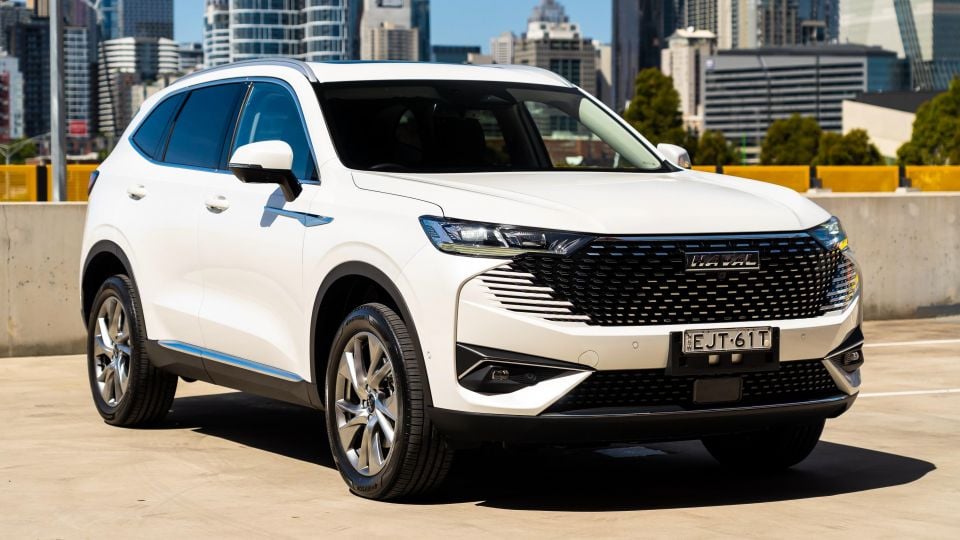
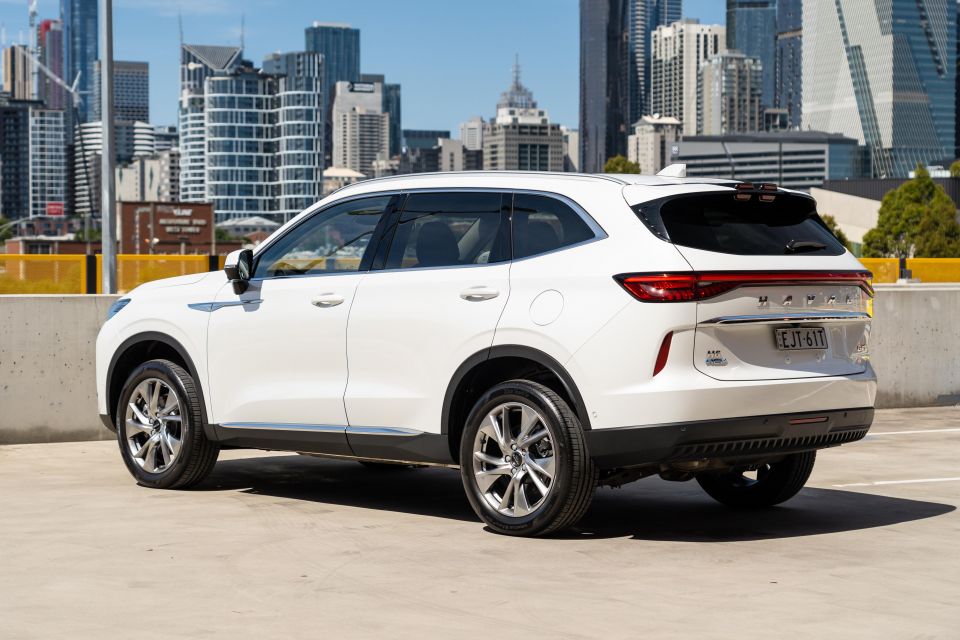

News Editor
New from
$32,790
excl. on-roads

News Editor
New from
$32,790
excl. on-roads


News Editor
New from
$32,790
excl. on-roads

News Editor
New from
$32,790
excl. on-roads
Quickly see how this car stacks up against its competition. Select any benchmark to see more details.
Where expert car reviews meet expert car buying – CarExpert gives you trusted advice, personalised service and real savings on your next new car.
It took a while for Toyota to finally bring its hybrid RAV4 to Australia, waiting a whole generation to introduce a powertrain that has quickly become the most popular in the line-up.

With the RAV4 hybrid selling up a storm and waiting times blowing out to up to two years, there’s clearly demand for a mid-sized hybrid SUV.
GWM, Nissan and Subaru have responded in kind, while Honda has a pair of hybrid mid-sizers in the pipeline and Hyundai is expected to finally bring a hybrid Tucson here next year.
The segment has therefore gone from barren to booming in a short space of time, with the GWM Haval H6 carving out a niche as one of the more affordable models.
That’s despite GWM offering it exclusively in one fully loaded trim. Does it make sense to stick with a base model SUV from the established hybrid leader, or take a chance on a vehicle from a younger Chinese brand that’s loaded with all the fruit?
The hybrid is available only in top-spec Ultra trim, priced at $45,990 drive-away – a steep $6000 more than a front-wheel drive, petrol-powered H6 Ultra.
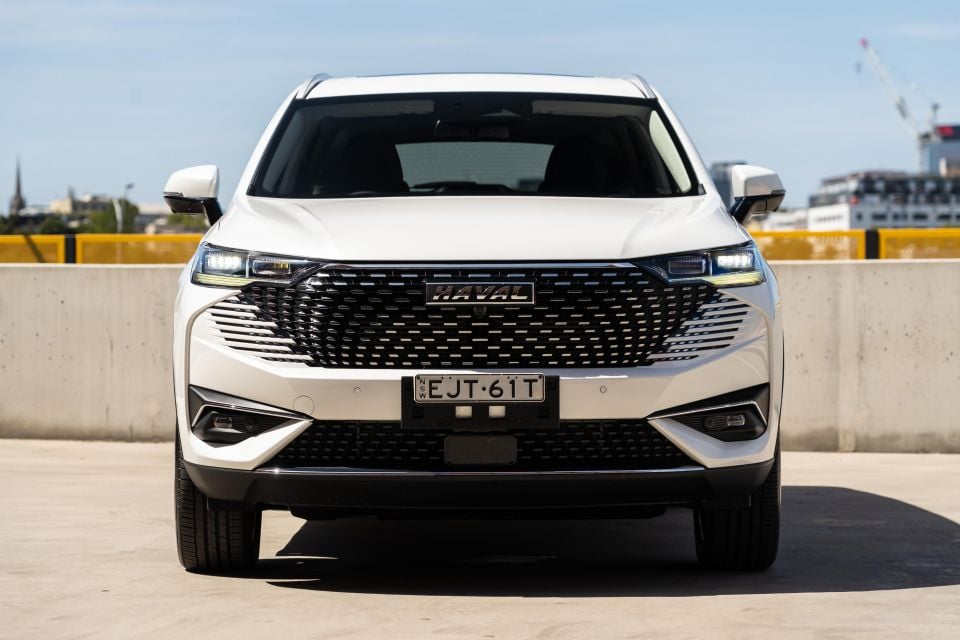
Against a Toyota RAV4, however, this is one sharply priced machine. A base RAV4 GX hybrid costs $40,550 before on-road costs, or $44,770 drive-away based on a Sydney postcode.
Nissan doesn’t offer an equivalent X-Trail e-Power to that base RAV4, with the electrified range opening at $54,190 before on-road costs for a well-specified Ti, or $58,621 drive-away. Subaru’s less efficient Forester Hybrid L is priced at $43,290 before on-roads, or $48,224 drive-away.
Buy your new car without the stress. It's fast, simple and completely free.

Great service from Travis and team, second time I have used this business would not hesitate to recommend them to anyone
Craig C.
Purchased a Ford Ranger in Sunshine Coast, QLD
CarExpert helped Craig save thousands on his Ford Ranger, now let us save you on your next new car.
Find a dealThe H6 Hybrid’s interior is almost identical to the petrol H6’s, which is both good and bad.
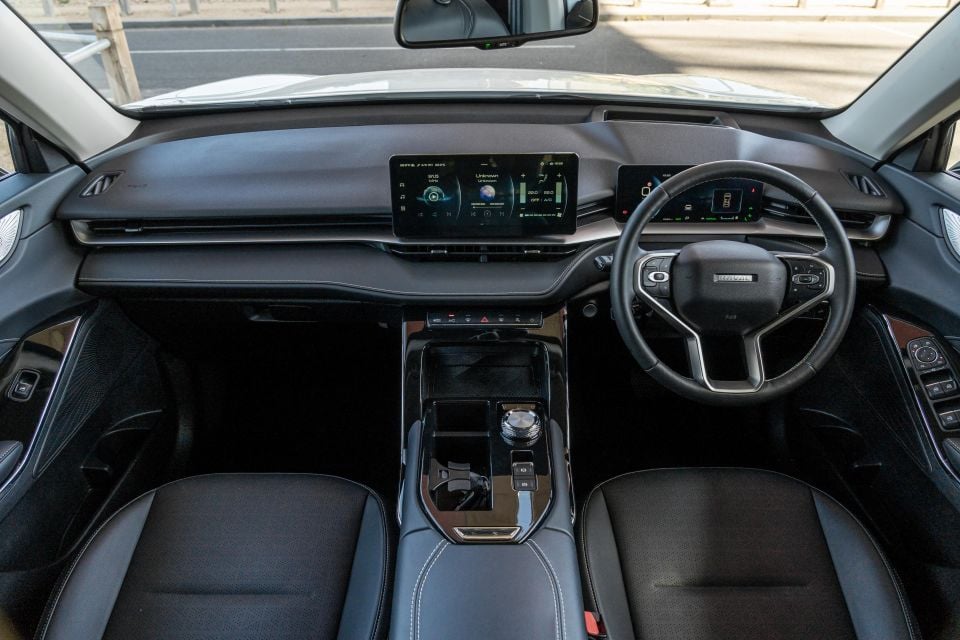
In terms of presentation, the H6 scores highly. It has serious showroom appeal, from the slick-looking screens to the minimalist dashboard and neat ambient lighting that bleeds through the dashboard.
Material quality is also generally good, with soft-touch trim used on the dashboard and doors. It can also be found on the sides of the centre console, if not near where your knee may rest.
There are some cheap touches in the interior, however. The steering wheel feels thin and has a hole at the rear with an uncovered screw, something GWM could easily fix. We also noticed a creaky sound when winding down a window, though there were no other rattles or other build quality issues present in the H6.
The most bothersome part of the interior is the infotainment system.
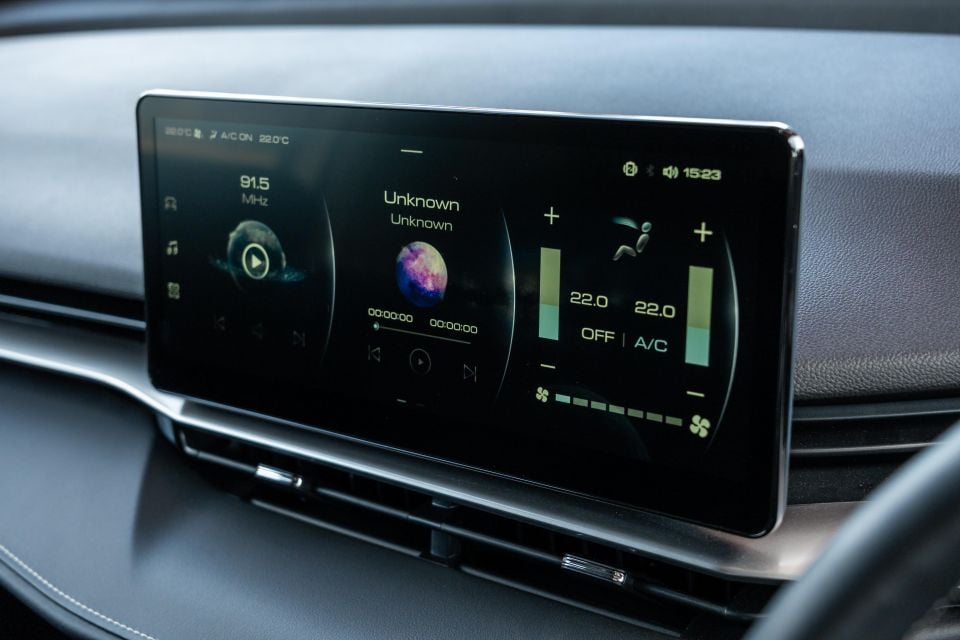
That neat, minimalist dashboard design has been achieved by removing a lot of the physical switchgear, leaving you to go burrowing through touchscreen menus to control functions like turning on the ventilated seats or changing the drive mode. The lack of native voice prompts also prevents you from easily adjusting settings.
You can customise a pull-down menu with your preferred shortcuts, but for some reason it wouldn’t let us add some key features like ventilated front seat controls. This leaves you hunting through menus to activate or deactivate features that in most cars you’d press a single physical button for.
The handy pull-down menu also doesn’t appear when you’re using smartphone mirroring. You’ll want to have your phone connected, as the Haval H6 doesn’t have factory satellite navigation. Handily, however, turn-by-turn directions from Google Maps appear in the head-up display.
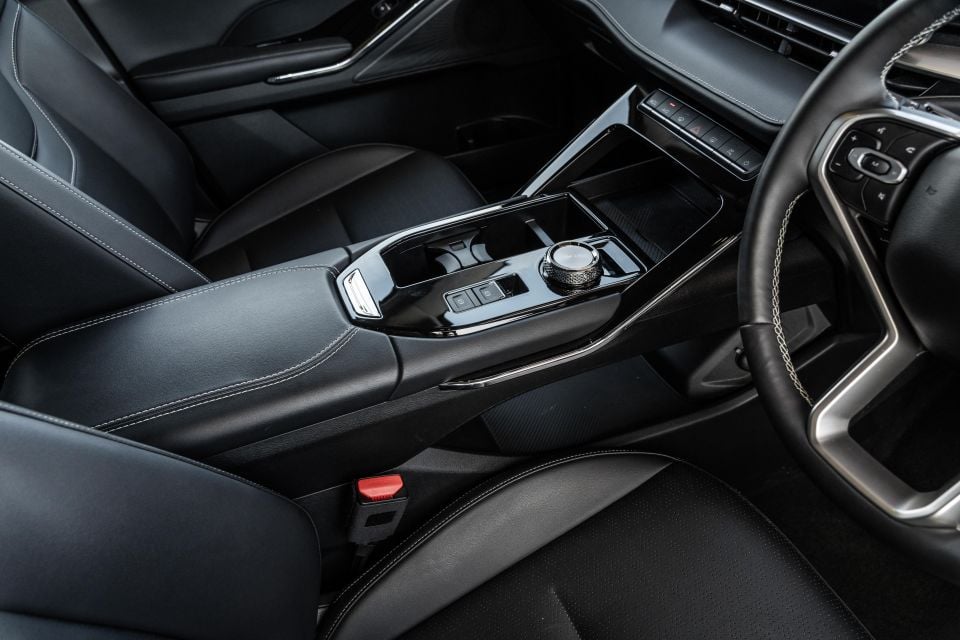
There are no physical controls for the climate control, again forcing you to rely on the touchscreen, while the system can lag when you’re swiping between screens.
The usability issues with the infotainment system are frustrating as the actual appearance of the system, as well as that of the digital instrument cluster, is quite impressive.
You have two slick themes to choose from – we preferred ‘Earth’ – and there are cute details like the animation in the cluster of your car and surrounding vehicles, which tells you where you are in relation to lane markings and other vehicles. It’s always moving, but manages not to be distracting. GWM has also done a better job with this type of display than Chery, which has a very similar screen.
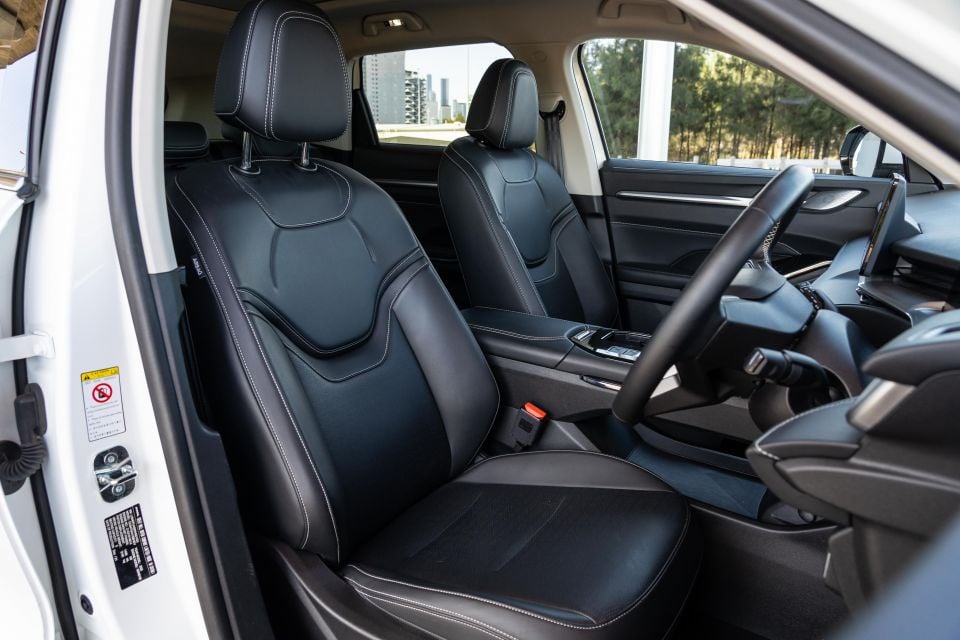
Then there’s the 3D surround-view camera, which has fabulous resolution. It’s a class-leading system, and puts those of some luxury-brand models to shame.
There’s a wireless charging pad at the base of the centre stack, while a handy storage shelf can be found below the centre console that’s large enough to accommodate a handbag. But GWM, why wouldn’t you move the USB outlet required for smartphone mirroring to the driver’s side?
Speaking of storage, the front doors will easily swallow 1L bottles, while there’s a decently sized centre console bin with an attractively finished lid that opens with the push of a button.
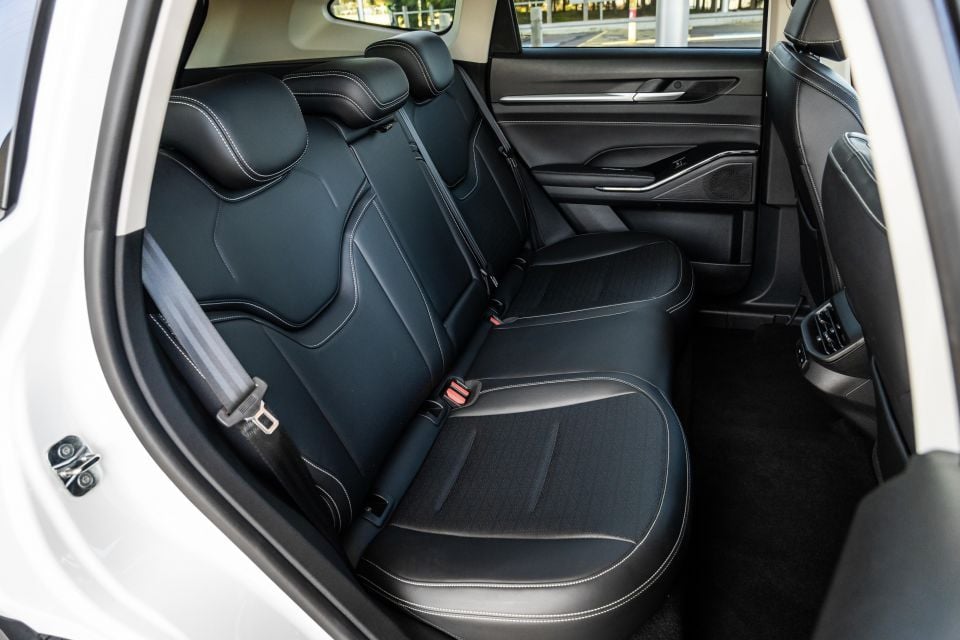
The front seats aren’t particularly well bolstered but they proved comfortable over long distances, while the steering wheel can be adjusted for both rake and reach.
The H6 is among the more spacious vehicles in its class, with the second row a particularly comfortable place to sit. There’s plenty of room in every dimension as, even at 180cm tall and with a panoramic sunroof above me, I could sit in the middle seat and have headroom to spare. There’s a nice, flat floor back here too.
In terms of amenities, there are two USB-A outlets, a fold-down armrest with two cupholders, and rear air vents. The storage cutouts in the doors, however, don’t have a proper insert to keep bottles in place.

Child seats can be positioned using one of the three top-tether anchor points or the ISOFIX anchor points on each outboard seat.
With the rear seats upright, the H6 has a boot capacity of 600L – one of the larger in the class. This expands to 1485L with the rear seats folded down.
Under the boot floor you’ll find a tyre repair kit, while on either side of the main boot floor you’ll find two open cubbies for storage. There’s also a 12V outlet.
The H6 Hybrid is powered by a 1.5-litre turbocharged petrol engine teamed with a two-speed 130kW electric motor, a 1.8kWh battery pack and a two-speed ‘Direct Hybrid Transmission’.
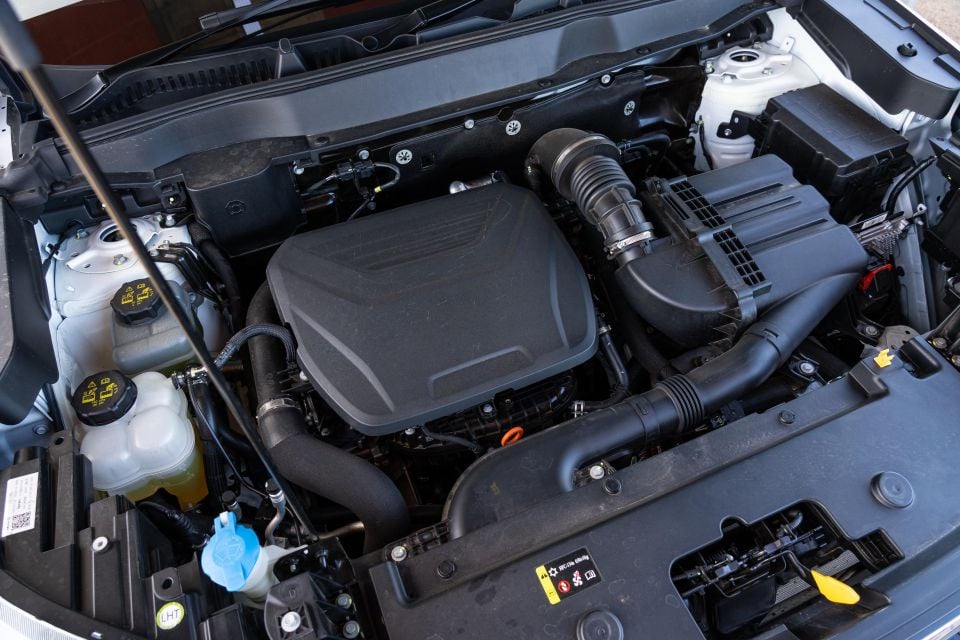
Total system outputs are 179kW of power and 530Nm of torque. While the petrol H6 is available with all-wheel drive, the hybrid is front-wheel drive-only.
Over a mix of inner-city, suburban and highway driving, we averaged 6.1L/100km – about the same as a Nissan X-Trail e-Power. On multiple highway runs, we would average around 6.0L/100km.
The official combined cycle claim is 5.2L/100km, slightly higher than a front-wheel drive RAV4 hybrid (4.7L/100km) but considerably less than the all-wheel drive-only Forester hybrid (6.7L/100km). It’s also 2.2L/100km thriftier than a front-wheel drive, petrol H6.
Like the Toyota, the Haval H6 will run on 91 RON regular unleaded fuel.
Toyota’s hybrids account for the majority of hybrid sales in Australia, which makes sense as they’ve been doing them for longer and the Japanese brand offers a wider range of them.
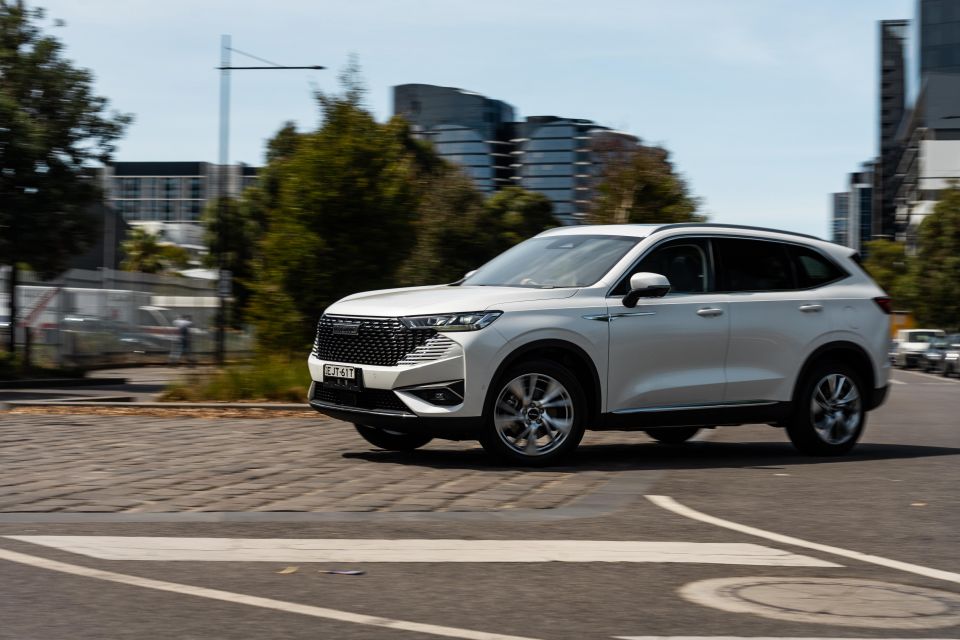
It’s fair to say, then, many Australians who have driven hybrids before may have only had experience with Toyota’s. The Haval H6 is going to feel quite different.
While Toyota’s hybrids start almost silently and run on EV power at low speeds before the petrol engine fires up, the Haval H6 will cut in and out of EV mode even at high speeds. For example, we observed it driving at speeds of up to 80km/h without the petrol engine operating.
That key difference between the H6 and a RAV4 is welcome. However, there are some downsides to GWM’s approach to hybrids.
The silent idle and guaranteed low-speed silence of a RAV4 hybrid isn’t present here, with grumbly sounds at idle and when driving in EV mode.
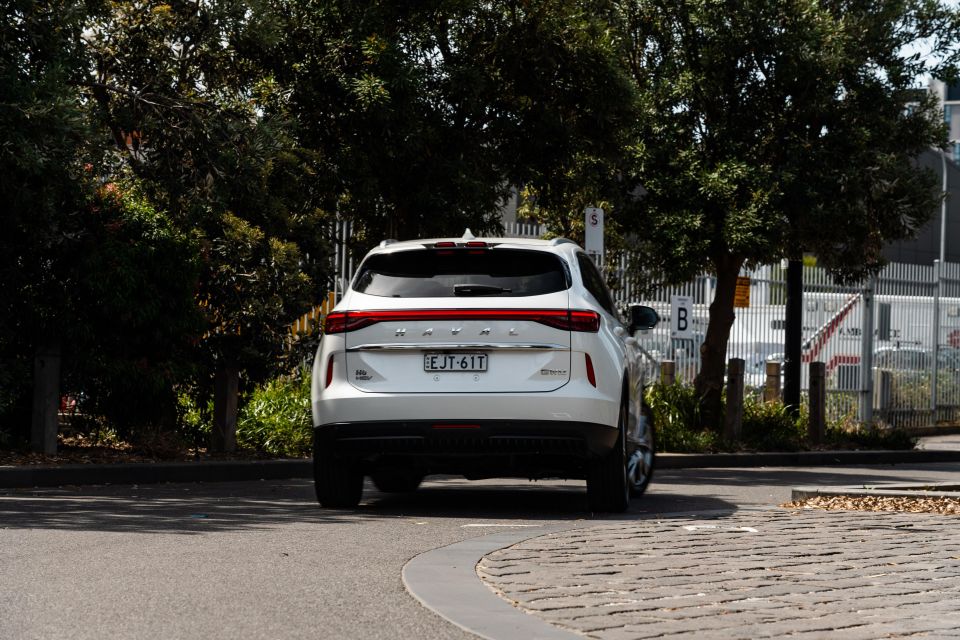
There’s a little bit of vibration sometimes when the petrol engine and electric motor are both running in tandem, and sometimes the transitions between petrol and electric power are a bit abrupt.
The car will tell you whether you’re in EV mode, parallel mode, or tandem mode, the latter mode a seemingly rare occurrence in our experience.
The H6’s outputs are impressive, but they’re also a lot for a front-wheel drive vehicle. With the wheelspin, you learn to feather the throttle like there’s a very small, very cute creature under the right pedal that you don’t want to squash. The tyres lack much in the way of grip, something all too apparent on greasy roads.

The hybrid powertrain is genuinely impressive, however. It has effortless thrust, and proves punchy in all driving scenarios; low-speed refinement is also superior to the petrol H6. While it has its own quirky noises, we also wouldn’t say that it overall sounds worse than a RAV4 hybrid – in fact, we’d argue the H6’s petrol engine sounds better.
At highway speeds, however, the H6 gets disappointingly noisy, particularly when compared with its electrified rivals. The cabin gets rather boomy, and too much road noise seeps in.
Noise aside, highway driving is a breeze in the H6. The head-up display is a welcome inclusion, and the adaptive cruise control works well, with the display cleverly showing a picture of a vehicle that changes from green to yellow to red the closer you get to it.
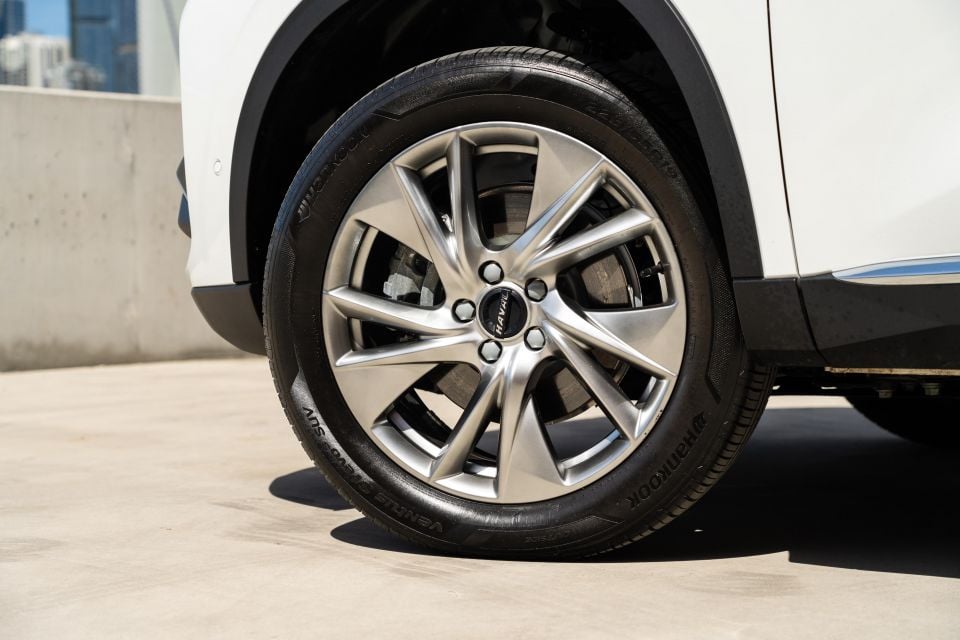
Where expert car reviews meet expert car buying – CarExpert gives you trusted advice, personalised service and real savings on your next new car.
The lane centring does a commendable job of keeping you between the white lines, though it can feel a bit squirmy at times.
It’s good the H6 is such a capable commuter, because the car doesn’t really do much to encourage you to drive it with any zeal. Should you do so, the wheelspin will bother you before the body roll and understeer get a chance.
You may think the trade-off for unexciting handling would be a plush ride, and you’d be mostly right. It is softly sprung, verging on floaty, but when you hit certain things like trim tracks it can feel rather brittle.
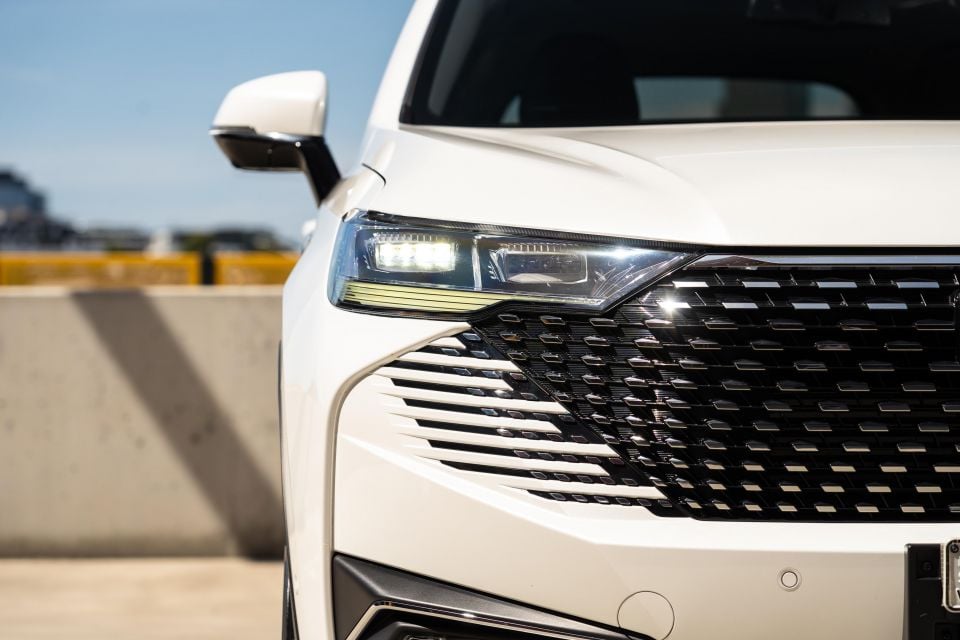
It also gets a little fidgety over some rougher surfaces, while the floatiness means it gets a bit bouncy over undulating roads and takes a couple of seconds to settle.
There are three different steering modes, though we just left it in Comfort; Light was too light, and Sport wasn’t sporty enough. Regardless of the mode, there’s not much road feel and it can feel rather artificial in its weighting.
Among the settings, we found the option of a “boost energy recovery mode”, but we didn’t feel much of a difference. Also present in the menu is a Wash/Trailer mode.
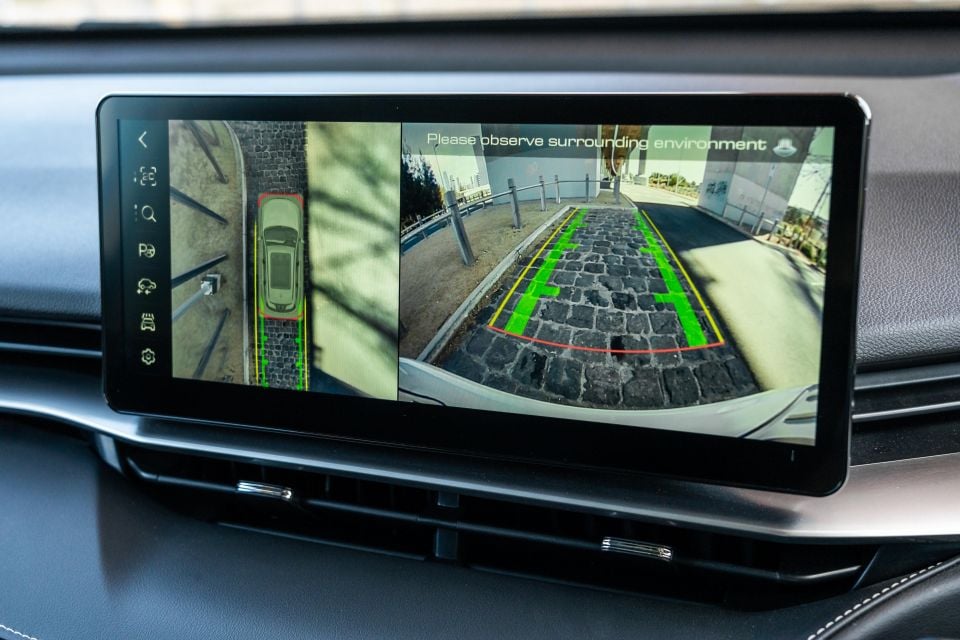
Parking the H6 is a breeze with its semi-autonomous parking assist. The system works genuinely well and there’s little to no learning curve.
We could do without the judgey “driving evaluation” that appears when you park the car. Three stars? Gee, okay GWM, I don’t tell you how you drive. Oh wait.
Overall, we’d like to see the H6 Hybrid get all-wheel drive and some better tyres, with some retuning done to its suspension. There are some solid elements here, particularly that punchy powertrain, but it needs some more finessing.
There’s just one hybrid H6 available, and it comes fully loaded.
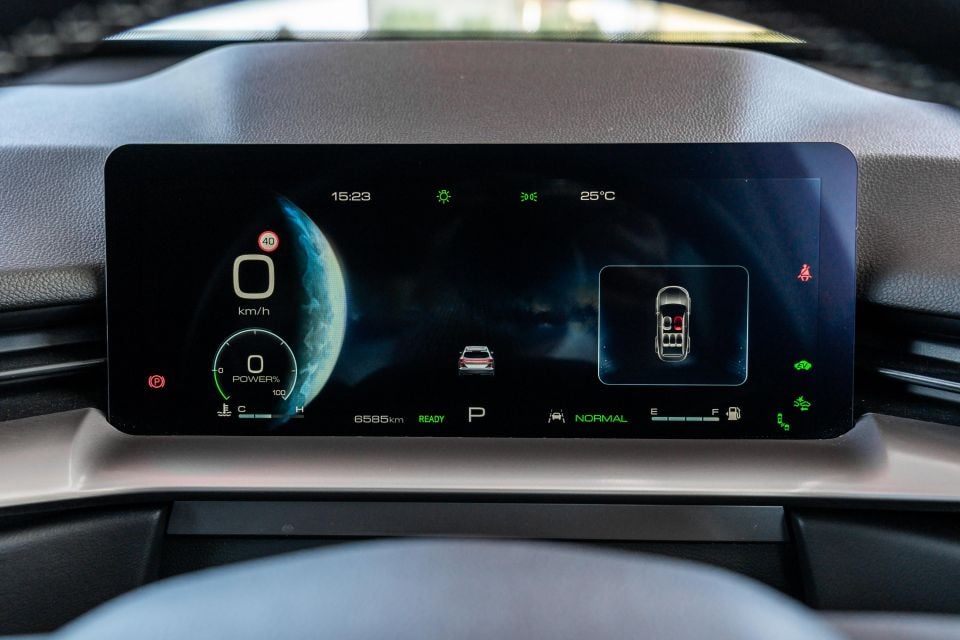
Standard equipment on the Haval H6 Ultra Hybrid includes:
That’s in addition to features found in less expensive, petrol-powered versions of the H6, including:
The GWM Haval H6 line-up – including the H6 Hybrid and H6 GT – has a five-star ANCAP safety rating with a 2022 date stamp.

The H6 received an adult occupant protection score of 90 per cent, a child occupant protection score of 88 per cent, a vulnerable road user protection score of 73 per cent, and a safety assist score of 81 per cent.
All models come standard with the following safety features:
Rear cross-traffic alert, adaptive cruise control with stop/go, a surround-view camera, traffic jam assist, and front parking sensors are available higher up in the range, including on the Ultra Hybrid.
The GWM Haval H6 is backed by a seven-year, unlimited-kilometre warranty.

GWM also offers five years of capped-price servicing. The first service is due at 12 months or 10,000km and costs $225, with subsequent services at 15,000km intervals. They’re priced at $250, $400, $550 and $225.
That works out to a total servicing cost of $1650 over five years, well under the Forester Hybrid L ($2963.61) but slightly pricier than a RAV4 ($1300).
The GWM Haval H6 Ultra Hybrid makes a compelling case for itself.
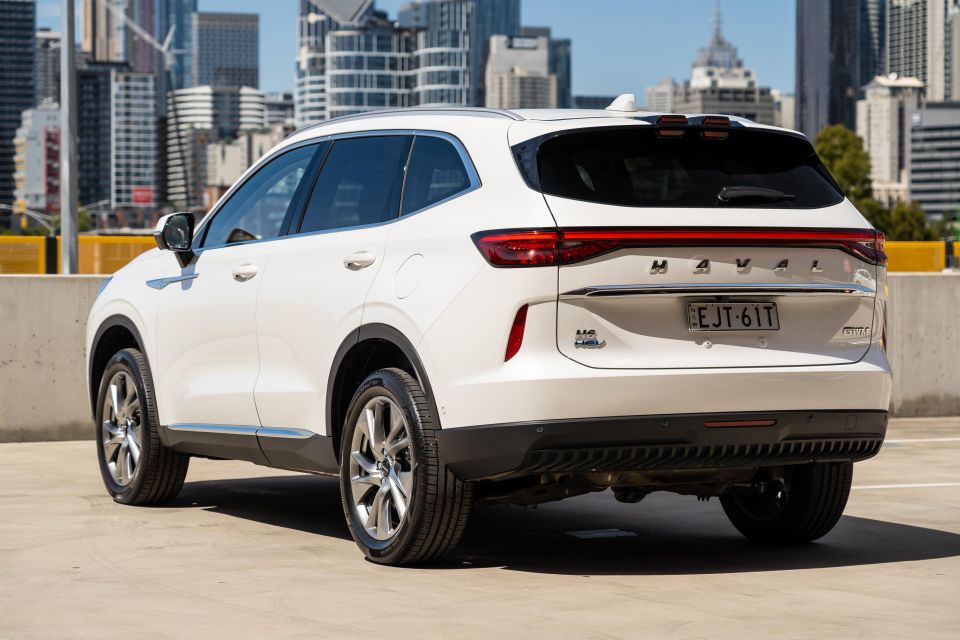
Its infotainment is as frustrating as in the petrol model, its ride and handling are just as floaty, and it does feel like a lot of grunt in a front-drive SUV on eco tyres. That $6000 premium over the thirstier petrol model is also a tough ask.
But when you consider the fact you can get this fully loaded H6 hybrid for roughly the price of a base RAV4 hybrid, it starts to make a little more sense. The occasional rumbly sound does intrude on the EV mode serenity, but this is otherwise a responsive powertrain that in some respects is more pleasant than that of the Toyota’s.
As with the regular H6, there’s also a spacious interior that feels quite solid overall.
GWM may have been increasing its prices lately (who hasn’t?), but the H6 Ultra Hybrid still offers impressive value for money.

MORE: Everything GWM Haval H6
Where expert car reviews meet expert car buying – CarExpert gives you trusted advice, personalised service and real savings on your next new car.
William Stopford is an automotive journalist with a passion for mainstream cars, automotive history and overseas auto markets.


CarExpert.com.au
17 Minutes Ago


Damion Smy
14 Hours Ago


Damion Smy
22 Hours Ago


Josh Nevett
23 Hours Ago


Max Davies
1 Day Ago


Ben Zachariah
2 Days Ago